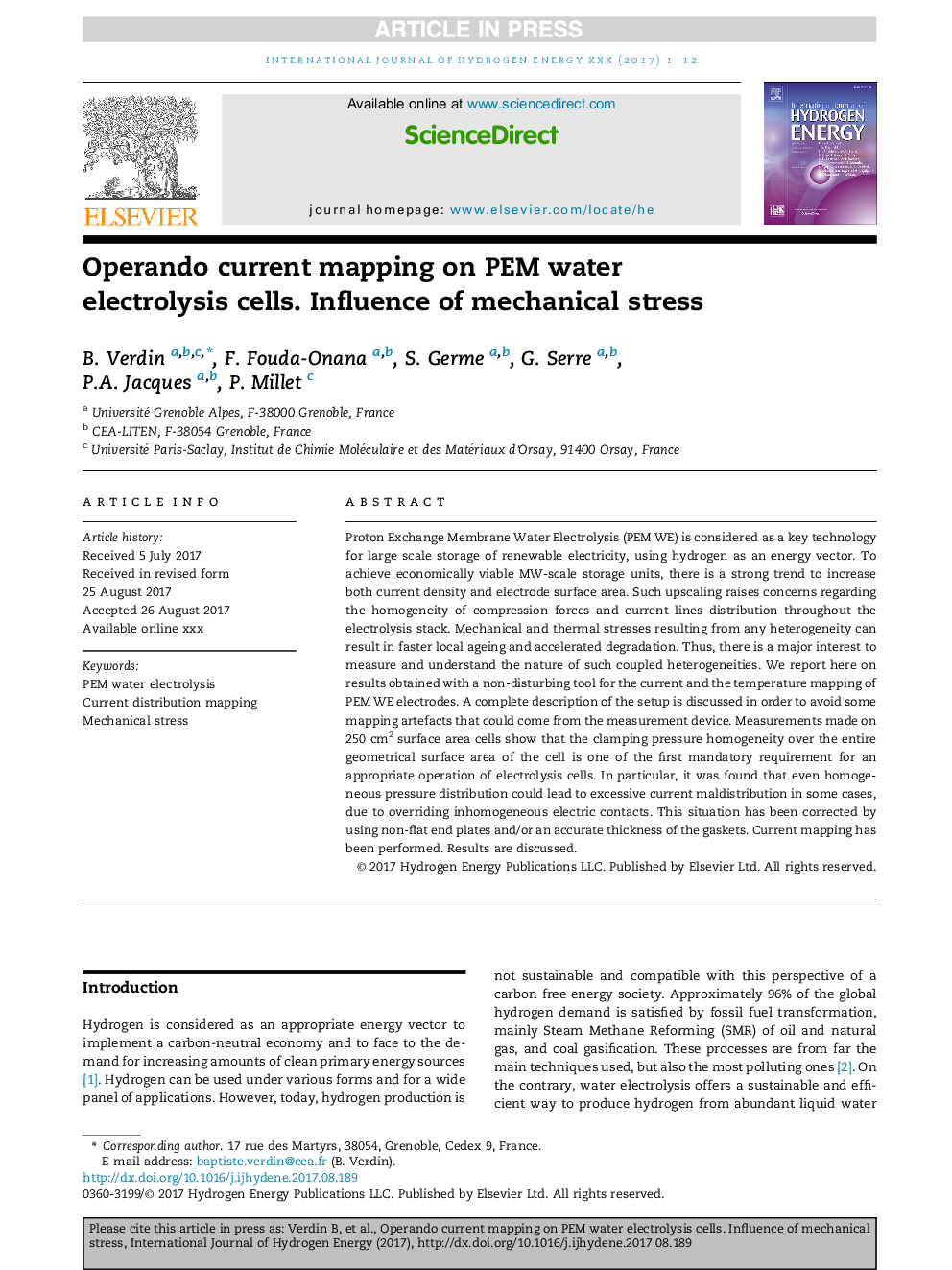| Article ID | Journal | Published Year | Pages | File Type |
|---|---|---|---|---|
| 5145147 | International Journal of Hydrogen Energy | 2017 | 12 Pages |
Abstract
Proton Exchange Membrane Water Electrolysis (PEM WE) is considered as a key technology for large scale storage of renewable electricity, using hydrogen as an energy vector. To achieve economically viable MW-scale storage units, there is a strong trend to increase both current density and electrode surface area. Such upscaling raises concerns regarding the homogeneity of compression forces and current lines distribution throughout the electrolysis stack. Mechanical and thermal stresses resulting from any heterogeneity can result in faster local ageing and accelerated degradation. Thus, there is a major interest to measure and understand the nature of such coupled heterogeneities. We report here on results obtained with a non-disturbing tool for the current and the temperature mapping of PEM WE electrodes. A complete description of the setup is discussed in order to avoid some mapping artefacts that could come from the measurement device. Measurements made on 250Â cm2 surface area cells show that the clamping pressure homogeneity over the entire geometrical surface area of the cell is one of the first mandatory requirement for an appropriate operation of electrolysis cells. In particular, it was found that even homogeneous pressure distribution could lead to excessive current maldistribution in some cases, due to overriding inhomogeneous electric contacts. This situation has been corrected by using non-flat end plates and/or an accurate thickness of the gaskets. Current mapping has been performed. Results are discussed.
Related Topics
Physical Sciences and Engineering
Chemistry
Electrochemistry
Authors
B. Verdin, F. Fouda-Onana, S. Germe, G. Serre, P.A. Jacques, P. Millet,
